IN CONFIDENCE
Hazard Risk Board Terms of Reference
Final – February 2019
Introduction
1. The National Security System is the arrangement by which the New Zealand Government
identifies and mitigates risks to national security. A foundation of this arrangement is the
Officials’ Committee for Domestic and External Security Coordination, which meets both in
response mode (ODESC) and in strategic risk management mode (through two chief executive
level boards – the Hazard Risk Board, and the Security & Intel igence Board).
2. These terms of reference relate to the Hazard Risk Board (HRB).
Vision
3. A resilient New Zealand that reduces the risk of, prepares for, responds to, and recovers from,
the impacts of natural hazards and civil contingencies.
Purpose and Role
4. HRB exists to build national resilience in the face of national security risk; particularly by
coordinating government’s responsibilities to manage hazard risk, providing assurance that
capabilities for risk management are fit for purpose, and enabling the government to function
INFORMATION ACT 1982
effectively in the face of “all risks”.
5. HRB’s responsibilities include the strategic governance and stewardship of New Zealand’s
emergency management system (EMS) – a sub-system of the NSS.
6. HRB will contribute to the wider leadership of the NSS by working collectively to achieve
coordinated strategic governance of the risks for which HRB members are accountable. From
time to time, this may require coordination with Security & Intelligence Board (SIB) members,
and/or other parts of the NSS.
Responsibilities
7. HRB will strive for continuous improvement of the NSS by:
a. Ensuring that New Zealand’s external and internal environment is regularly reviewed in
order that emerging risks are identified and the status of current risks are routinely
monitored.
b. Providing col ective and system support to individual risk coordinating agencies – by
ensuring that risks are holistical y evaluated and measured.
c. Ensuring that in respect of system efforts to build resilience there is alignment between
system and agency priorities, investments and policies.
d. Proactively sharing information and draft policy options, relevant to risks governed by
HRB, in order to maximise opportunities for col aborative risk management and
messaging.
RELEASED UNDER THE OFFICIAL
e. Providing coordinated advice to Ministers on national security issues and policy relevant
to HRB’s focus.
IN CONFIDENCE
Page
1 of
6
link to page 2
IN CONFIDENCE
f. Providing strategic leadership of the EMS and connecting it with other parts of the NSS
as appropriate.
g. Agreeing priority work areas and outcomes for the NSS (including the EMS), which:
i. Effectively manages risks for which HRB agencies have responsibility
ii. Clarifies roles and responsibilities across the system
iii. Builds system capability
1982
iv. Improves interoperability of system components.
h. Testing and challenging the advice and initiatives coming out of the system to ensure
ACT
actions are aligned to system outcomes.
i. Championing, supporting and driving system initiatives led by member agencies. HRB will
connect the right parts of the system, and effectively address blockages.
j. Reporting annually (or as otherwise directed), to the appropriate Minister(s)
1 about the
management of risks governed by HRB, and the strategic-level performance of the EMS.
k. Supporting the development of new initiatives to enhance system performance, including
supporting “orphan” projects where there is assessed to be a likely system-level benefit.
Guiding Principles
INFORMATION
8. The HRB’s work is underpinned by the fol owing principles:
a.
He tāngata – We recognise that everything we do has the potential to impact on New
Zealand communities and individuals, and that some communities and individuals are
more vulnerable than others to negative impacts. We strive to deliver equitable outcomes,
and to ensure New Zealanders can go about their daily business confidently, free from
fear, and able to make the most of opportunities to advance their way of life.
OFFICIAL
b.
Strategic system focus – We prioritise system interests above the interests of individual
agencies. We recognise that the pooling of resources among agencies with common
strategic challenges achieves optimisation of capability in certain circumstances. We
rarely (if ever) dip into day-to-da
THE y operational issues.
c.
Risk-based – We focus on the critical and complex areas that require collective resolution
both in the short and long term. Criticality is based on evidence drawn from across the
system.
d.
Balance – We take an “al hazards, al risks” approach across each part of the “4Rs”
UNDER
emergency management framework.
e.
Collegiality – We actively build and maintain supportive relationships across the NSS, so
that opportunities to build New Zealand’s resilience are proactively identified and acted
upon in a col aborative and coordinated manner. We act as “critical friends” to one
another.
f.
Accountability – We are accountable to Ministers and the New Zealand public, where
relevant through governing Boards, for our performance as a col ective. We are
RELEASED
1 This wil typical y be the Minister with responsibility for National Security, or the Minister of Civil Defence where it is about the
EMS.
IN CONFIDENCE
Page
2 of
6
IN CONFIDENCE
transparent about our challenges and achievements, and we set indicators (in
consultation with Ministers) to measure and report on our performance.
g.
Learning culture - We are not afraid to have difficult discussions. We identify, understand
and apply insights learned from exercises and real-life challenges for the benefit of the
system.
Funding
1982
9. We recognise that the pooling of resources among agencies with common strategic
challenges achieves optimisation of capability in certain circumstances. We have adopted a
“shared responsibility” model based on the State Services Commission’s System Design
ACT
Toolkit. As such, within the defined ability of the respective organisations, HRB will fund
system initiatives through any combination of:
a. Joint resourcing (staffing) of shared functions,
b. Individual agencies committing to specific activities and funding these from baselines,
c. Agencies each contributing agreed funding amounts, or
d. Agencies pooling underspends.
Board Composition
10. HRB members will include:
INFORMATION
a. The Chief Executives of the following agencies (or their delegates):
i. Department of Internal Affairs (DIA)
ii. Department of the Prime Minister and Cabinet (DPMC)
iii. Fire and Emergency New Zealand (FENZ)
OFFICIAL
iv. Ministry for the Environment (MfE)
v. Ministry for Primary Industries (MPI)
vi. Ministry of Business, Innovation and Employment (MBIE)
THE
vii. Ministry of Civil Defence and Emergency Management (MCDEM)
viii. Ministry of Foreign Affairs and Trade (MFAT)
ix. Ministry of Health (MoH)
UNDER
x. Ministry of Transport (MoT)
xi. New Zealand Defence Force (NZDF)
xii. New Zealand Police (NZP).
11. The Chair of the Board will be appointed by the Chief Executive of DPMC, in his or her
capacity as Chair of ODESC.
12. New agencies may be invited to join HRB. This will be documented appropriately, and
RELEASED
noted in any future refresh of this Terms of Reference.
IN CONFIDENCE
Page
3 of
6
IN CONFIDENCE
13. Non-member government agencies, non-government organisations and private sector
entities may be invited to attend HRB meetings in support of specific agenda items, by
agreement with the Chair.
HRB Secretariat
14. DPMC’s NSS Directorate (NSSD) provides the HRB Secretariat. The Secretariat supports
HRB’s work programme, leads key strategic projects and champions system-wide
1982
collaboration. It also provides the Board with administrative support services and policy
advice, and reports against any Board performance measures.
15. The Secretariat wil act as a coordination and liaison point for the Board as needed.
ACT
HRB Meetings
16. HRB meetings will be held approximately six times per year. The Chair may call additional
meetings as needed, and any HRB member may ask the Chair to call a meeting outside of
the forward meeting calendar.
17. Consideration of issues and related decisions may be made outside of formal meetings as
required, if this is documented by the Chair (either a record of conversation, or an email
trail) and retained by the Secretariat.
18. The Chair may exercise a casting vote in the event of any deadlocks.
INFORMATION
Agenda and Papers
19. Procedures for the submission of papers are noted in Annex 1.
20. Agencies wil put forward agenda items, with the Chair determining the final agenda.
21. With the exception of items raised in ‘General Business’, all agenda items are to be
supported by a paper prepared by the sponsoring agency.
OFFICIAL
22. Late papers wil only be accepted in exceptional circumstances and only by agreement
between the member agency CE and the HRB Chair directly.
THE
HRB Senior Officials Group
23. A Senior Officials Group (SOG), chaired by the HRB Secretariat, wil support HRB.
24. The SOG’s purpose is to support the HRB’s work programme by managing the forward
agenda, and ensuring that the work programme and related action items are managed
appropriately.
UNDER
HRB’s Work Plan
25. HRB’s existing focus areas were retired on 30 June 2018 and wil not be replaced by new
focus areas.
26. HRB may commission specific time-bound projects, if the objectives, deliverables,
accountabilities and resourcing mechanisms are clearly defined by the sponsoring
member(s) and agreed by HRB.
RELEASED
Accountabilities
IN CONFIDENCE
Page
4 of
6
IN CONFIDENCE
27. The HRB reports through the Chair of ODESC to the Minister with responsibility for National
Security, as wel as other EMS Ministers as appropriate.
28. Completed action items will serve as HRB’s primary deliverables, with credit given to the
lead and supporting agencies as appropriate.
29. The HRB Secretariat will coordinate the delivery of a concise annual report about HRB’s risk
management activities, in consultation with the HRB SOG.
1982
30. Where possible, the timing of the annual report will be aligned with that of SIB.
ACT
INFORMATION
OFFICIAL
THE
UNDER
RELEASED
IN CONFIDENCE
Page
5 of
6
IN CONFIDENCE
Annex 1: HRB Procedures
Paper Submission Requirements
31. The originating agency is responsible for consulting all papers with HRB SOG members,
and with any other appropriate agencies, before papers are finalised and submitted to the
Secretary.
32. Final papers are to be submitted to the HRB Secretary at least 10 working days before the
1982
relevant HRB meeting.
33. Submitting agencies should identify what they wish HRB to do with each paper, bearing in
mind that the “value-add” of an HRB meeting is the opportunity for members to discuss
ACT
and test thinking about sector-related risk management and proposed courses of action,
and provide guidance to member agencies.
34. The final agenda and papers for each meeting will be circulated by the HRB Secretary no
later than 5 working days before the relevant HRB meeting.
35. Al papers must have a cover sheet. Cover sheets may be prepared by the submitting
agency, or by the HRB Secretary in consultation with the submitting agency.
36. HRB papers should generally use the templates provided by the Secretary, but it is
recognised that this may not always be possible (e.g. if HRB is considering a document that
has been published by a third party, or if a different format – such as an A3 – is more
INFORMATION
beneficial for a particular item).
Circulation of meeting Minutes
37. Draft minutes and action points will be circulated by the HRB Secretary no later than 5
working days after the relevant HRB meeting.
38. The HRB Secretary will send letters to members confirming meeting action points, no later
OFFICIAL
than 10 working days after the relevant meeting.
39. Any proposed amendments to the minutes may be raised with the Secretary, or at the
following HRB meeting. The Chair’s decision on minutes’ content is final.
THE
UNDER
RELEASED
IN CONFIDENCE
Page
6 of
6
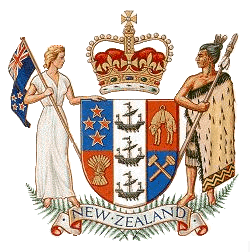 Terms of Reference
National Agencies’ Incident Management Reference Group
1982
ACT
Terms of Reference
National Agencies’ Incident Management Reference Group
1982
ACT
Terms of Reference for the
National Agencies’
Incident Management Reference Group (IMRG)
December 2017
INFORMATION
‘Building a resilient National Security System’
OFFICIAL
THE
UNDER
RELEASED
December 2017
Page
1 of
5
Terms of Reference
National Agencies’ Incident Management Reference Group
1. Purpose & Brief
Purpose
This document details the terms of reference for the National
Agencies’ Incident Management Reference Group (IMRG). This
group is one of the committees reporting to the Hazard and Risk
Board (HRB)as part of the National Security System.
1 Synergies
1982
exist with some of the other National Security committees such as
the National Exercise Programme (NEP).
The purpose of IMRG is to provide an information sharing forum for
ACT
central government agencies that have, in emergency events, an
Incident Management Team operating at a national level. The
group is also intended to provide a ‘joint voice’ or incident
management ‘industry’ group to represent the sector as well as an
information sharing and support network.
Many agencies involved in the Group are working on similar issues
and so the aim of the Group is to for members to be able to share
initiatives and to be able to work ‘smarter’ together. As a conduit
into the government agencies, the group wil also work on various
joint initiatives or deliverables as and when required. T
INFORMATION hese
initiatives may be self-generated or requested by HRB.
Objectives
The objectives of the Group include
2:
1. Sharing IMT initiatives and experience that may be of
relevance or interest to other members.
2. Sharing training and development opportunities for National
OFFICIAL
Controllers or other IMT positions, including facilitating the
coordination of exercises.
3. Sharing
THE of lessons from live events or inter-agency
exercises.
4. Assisting agencies by providing ideas and advice on agreed
issues, such as the establishment of a national IMT cadre or
ways in which best practice Planning and Intelligence could
be d
UNDER eveloped and promulgated.
5. Act as an operational coordinating group for the National
Security System (excluding Counter-Terrorism.)
6. Represent the incident management / emergency
management sector as an industry group
7. Carrying out relevant work on behalf of the HRB in the
interest of the wider state sector
RELEASED
1 National Security System Handbook, 2016, pg 17
2 Discussion during the meeting in Feb 2013 favoured this Group fil ing some of the coordination ‘gaps’
that are not addressed in other multi-agency forums.
December 2017
Page
2 of
5
Terms of Reference
National Agencies’ Incident Management Reference Group
8. Other objectives that may be agreed by the Group.
2. Structure
Membership
Membership is open to central government agencies that have a
1982
role to play in establishing and coordinating an Incident
Management Team operating at national level. This includes but is
not limited to:
ACT
• Department of Prime Minister and Cabinet
• Department of Corrections
• Fire and Emergency New Zealand
• Ministry of Business, Innovation & Employment
• Ministry of Civil Defence and Emergency Management
• Ministry of Culture & Heritage
• Ministry of Foreign Affairs & Trade
Membership
INFORMATION
cont.
• Ministry of Health
• Ministry for Primary Industries
• Ministry of Transport
• Ministry of Social Development
• New Zealand Customs Service
OFFICIAL
• New Zealand Defence Force
• New Zealand Search & Rescue Secretariat
THE
• New Zealand Police
• New Zealand Transport Agency
• Maritime New Zealand
• Oranga Tamariki / Ministry for Vulnerable Children
UNDER
More than one representative is permitted in order to build
resilience into the group.
The representative from each agency should be a member of staff
who is:
• Experienced in incident management
RELEASED
• Aware of the incident management initiatives ongoing within
their own agency
• Able to influence incident management within their own
December 2017
Page
3 of
5
Terms of Reference
National Agencies’ Incident Management Reference Group
agency.
• Able to distribute IMRG material within their organisation.
Chair and
Secretariat
support
The role of Chair & Secretariat can be rotated between interested
1982
agencies
3. Meetings
ACT
Meeting
frequency and The National IMT Group will meet two monthly. Each meeting will
location
be hosted by a dif erent agency, on a rotating basis.
Meeting format The meeting wil follow a general template of:
and Agenda
• Introductions / Attendees
• Apologies
• Clarification of previous meeting notes and any action p
INFORMATION oints
• Updates on any joint projects
• Presentations or topics to discuss or as agreed
• Agency updates relevant to the objectives
• General business
OFFICIAL
• Next meeting and venue
Each meeting w
THE il provide an opportunity for networking, normally
through a ‘morning tea’ break occurring during the meeting. Host
agencies wil be responsible for providing this.
Agendas wil be distributed by the secretariat at least five (5) days
prior to the meeting.
UNDER
Items for the agenda will ideally be with the chairperson at least
two weeks before the meeting.
Meeting notes Meeting notes (rather than formal minutes) wil be distributed within
one week of the meeting.
RELEASED
Costs
1. Agencies wil meet their own costs of participation.
2. The Chair and secretariat wil meet secretariat and associated
costs.
December 2017
Page
4 of
5
Terms of Reference
National Agencies’ Incident Management Reference Group
3. The host of each meeting (rotating through agencies) wil meet
the costs of hosting the meeting and also any costs associated
with liaison with the Chair and secretariat regarding the agenda
etc.
1982
4. Joint Initiatives or Deliverables
Projects
From time to time IMRG may be asked by HRB or of their own
ACT
volution, to carry out research or complete projects on relevant
issues. Sub-committees may be formed to work on such issues
before presenting to IMRG for validation. This work can be
presented to HRB for noting or seeking further action.
5. Record Keeping
Shared
Meeting notes, agendas and any other relevant documents wil be held within
workspace an IMRG shared workspace in EMIS hosted by the Ministry of Health.
s9(2)(g)(ii)
INFORMATION
6. Governance
The IMRG is a sub-commit ee of the HRB. Accordingly, the Chair is
responsible for reporting back to the HRB on any initiatives assigned to
it by the Board as well as provide an annual report.
OFFICIAL
THE
UNDER
RELEASED
December 2017
Page
5 of
5
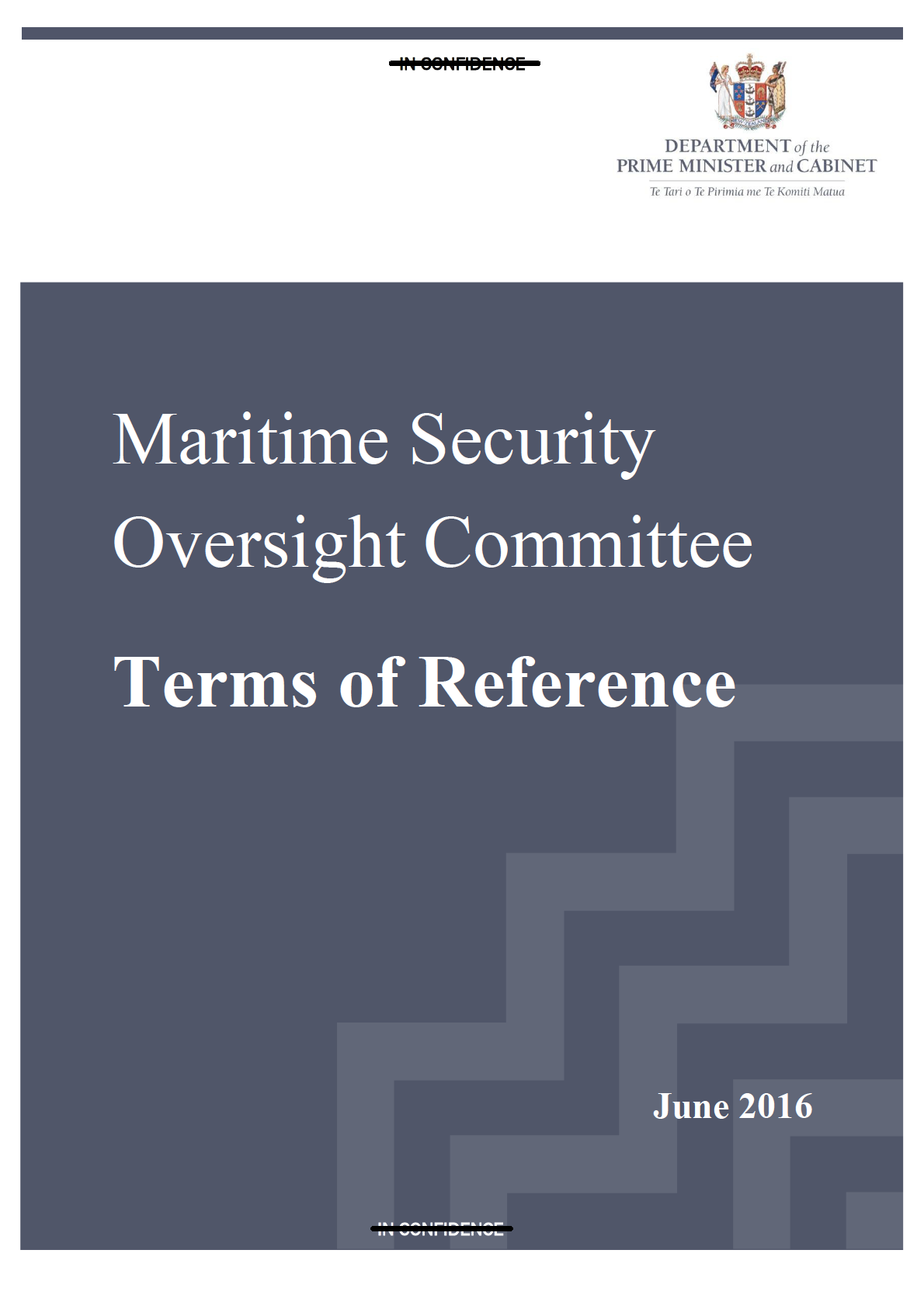 1982
ACT
INFORMATION
OFFICIAL
THE
UNDER
RELEASED
1982
ACT
INFORMATION
OFFICIAL
THE
UNDER
RELEASED
IN CONFIDENCE
MSOC ToR June 2016
Vision
1. New Zealand’s maritime interests are secure.
Principles
1982
2. The maritime domain encompasses anything on, under, relating to, adjacent to, or bordering
a sea, ocean, or other navigable waterway, including all maritime-related activities,
infrastructure, people, cargo, and vessels and other conveyances that impact on New
ACT
Zealand’s interests.
3. New Zealand’s maritime interests include sovereignty, resource management, law
enforcement, maritime safety, environmental protection and the maritime economy.
4. The following principles will guide, and provide a framework for, the work carried out by the
Maritime Security Oversight Committee (MSOC):
• Collaboration - We ensure that we collaborate across agencies, including strategic
policies, strategies and initiatives. Owners and operators of critical maritime
infrastructure and resources are considered partners in achieving the security of New
Zealand’s maritime interests;
INFORMATION
• Maritime domain awareness1 - establishing, understanding and maintaining an
accurate and comprehensive national maritime operating picture (a single point of
truth) is a priority activity;
• Protection of maritime interests - New Zealand needs to undertake a range of
activities to protect our sovereignty and sovereign rights, resources, critical
infrastructure and the marine environment to reduce the incidence and impact of any
intentional or accidental activity or harm;
OFFICIAL
• Management of New Zealand’s maritime interests - New Zealand needs to maintain
an ability to mitigate or eliminate a detected maritime security threat.
THE
Purpose
5. The primary function of MSOC is to support the Hazard Risk Board through effective oversight
of national maritime security arrangements, namely:
UNDER
• Overseeing the implementation of the national maritime security strategic framework
(known as Te Kaitiakitanga o Tangaroa, Guardianship of New Zealand’s maritime waters);
o Aligning of strategies contained in the maritime component(s) of the
accountability documents for the agencies involved;
o Developing a shared awareness and understanding of New Zealand’s maritime
interest and any activity that impacts upon them;
o Effective coordination of planning, investment and operational activity amongst
agencies.
RELEASED
1Maritime Domain Awareness is the effective understanding of anything in the global maritime
environment that could impact on New Zealand’s security, safety, economy or the environment.
#3453335
IN CONFIDENCE
2 of 4
IN CONFIDENCE
MSOC ToR June 2016
6. MSOC also acts as a Board of Directors for the National Maritime Coordination Centre.
Members
7. MSOC wil be Chaired by the Secretary of Transport and wil include deputy-secretary level
representatives from the following agencies:
1982
Core membership: (Accountable agencies leading lines of work)
o Ministry of Transport
o
ACT
Department of Conservation
o Department of the Prime Minister and Cabinet
o Maritime New Zealand
o Ministry for Primary Industries
o Ministry of Business, Innovation & Employment
o Ministry of Defence
o Ministry of Foreign Affairs and Trade
o New Zealand Customs Service
o New Zealand Defence Force
o New Zealand Police
Wider membership: (ex officio)
INFORMATION
o Government Communications Security Bureau
o GEOINT New Zealand
o National Maritime Coordination Centre
o New Zealand Security Intelligence Service
8. Agencies within MSOC wil be responsible for the ownership of certain deliverables. These
will be agreed by the Committee.
OFFICIAL
9. Other agencies, non-government organisations, and private sector entities wil be invited
according to the agenda.
THE
Expectation of members
10. Members of MSOC must ensure the committee acts in a manner consistent with this Terms
of Reference.
UNDER
11. Members are expected to regularly attend meetings and support MSOC related work outside
of meetings.
12. MSOC wil operate as a col ective, rather than operating as committee of individuals
representing various constituencies. Members are expected to examine issues before MSOC
from a strategic viewpoint, support a consensus decision-making approach and support and
endorse the decisions of the MSOC.
13. Members are appointed as individuals with knowledge and expertise of the maritime security
sector. They are expected to use their networks to understand and communicate the views of
RELEASED
the sector, but are expected to govern on behalf of all stakeholders.
#3453335
IN CONFIDENCE
3 of 4
IN CONFIDENCE
MSOC ToR
14. The Chair of MSOC is expected to:
• Facilitate meetings;
• Manage communications;
• Ensure the objectives of MSOC are achieved;
• Build good working relationships with members and the wider maritime security
sector.
Committee performance
1982
15. The Chair of MSOC is required to report to the Hazard Risk Board on the performance of the
ACT
Committee on a regular basis, typically annually.
Meetings
16. MSOC meets quarterly with additional meetings cal ed by the Chair if needed. Consideration
of issues and related decisions can be made outside of formal meetings as required.
17. Meetings wil follow an agenda which, along with supporting papers, is to be circulated a
week in advance of the relevant meeting to allow MSOC to operate effectively.
18. Minutes of meetings and a record of decisions made wil be kept and confirmed at the next
INFORMATION
meeting of MSOC.
Secretariat
19. The MSOC secretariat is currently provided by the National Security Systems Directorate of
the Department of the Prime Minister and Cabinet. It acts as a co-ordination and liaison
OFFICIAL
point for MSOC.
20. The secretariat is supported by the Joint Maritime Advisory Group (JMAG).
THE
Joint Maritime Advisory Group
21. MSOC and the secretariat are supported by the Joint Maritime Advisory Group (JMAG). JMAG
is a standing multi-agency group responsible for driving the various al -of-government
maritime security work stre
UNDER ams.
22. Membership of JMAG wil be senior officials from MSOC agencies. Additional agencies may
be included to reflect the interests and expertise across the sector.
RELEASED
#3453335
IN CONFIDENCE
4 of 4
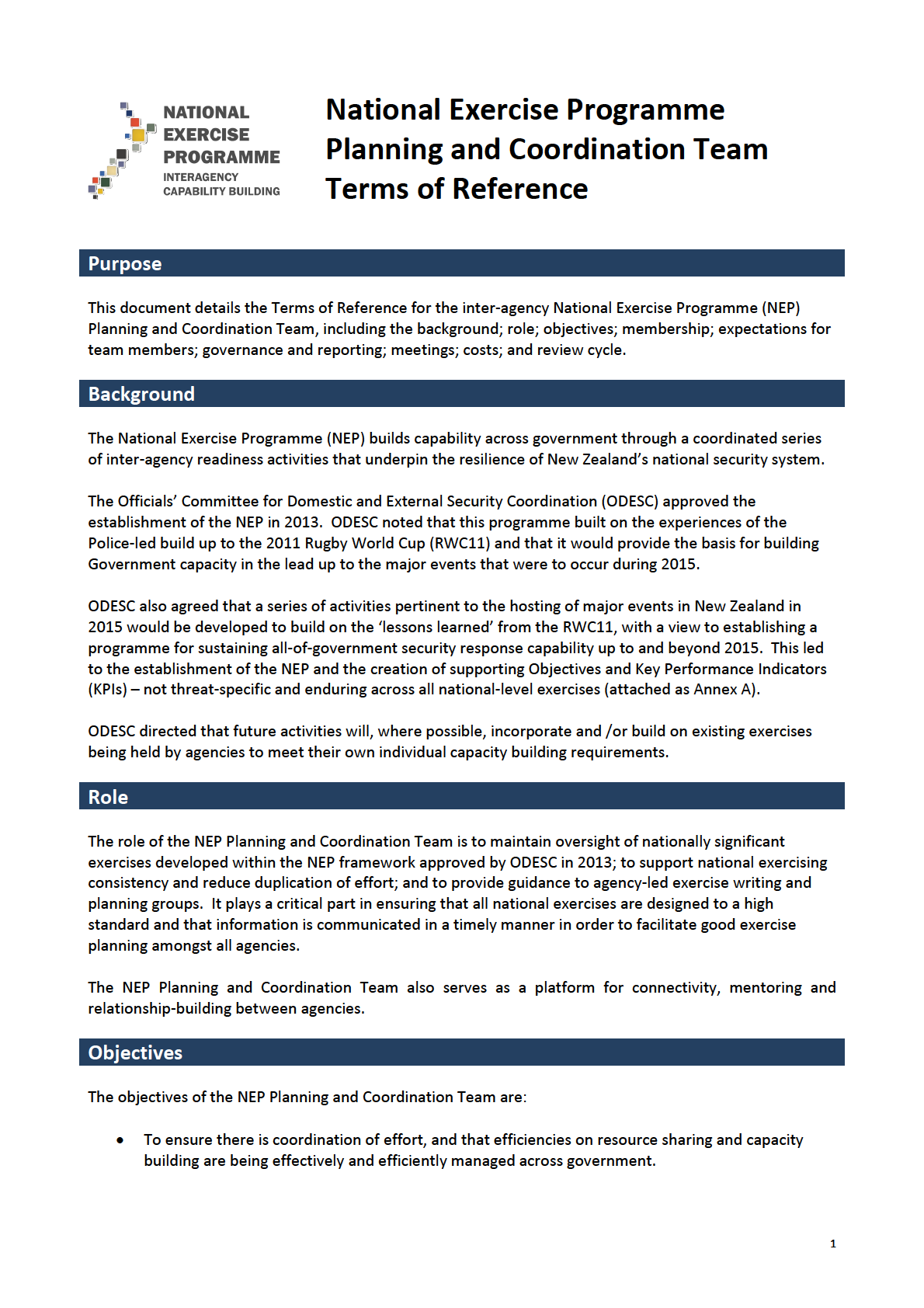 1982
ACT
INFORMATION
OFFICIAL
THE
UNDER
RELEASED
1982
ACT
INFORMATION
OFFICIAL
THE
UNDER
RELEASED
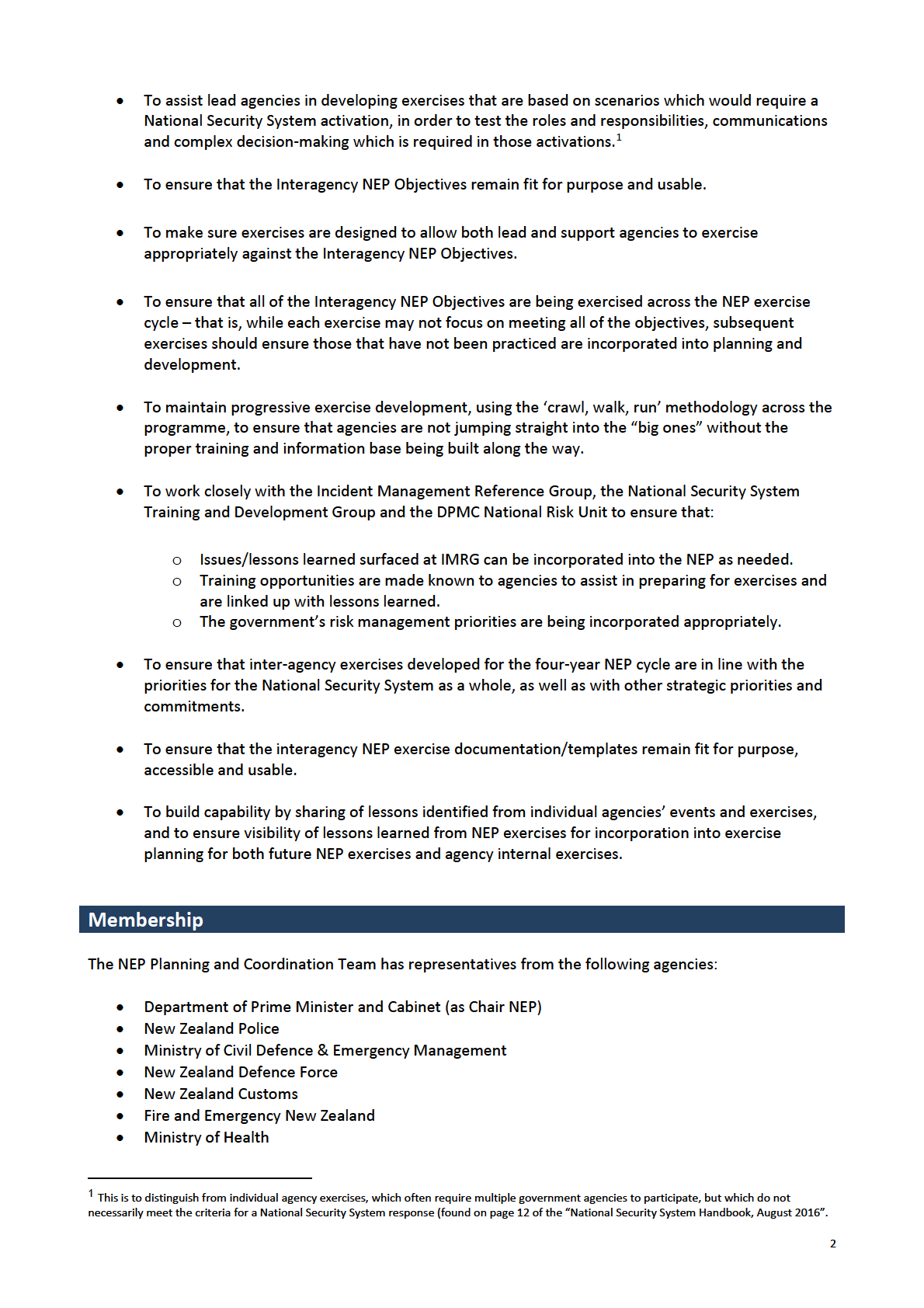 1982
ACT
INFORMATION
OFFICIAL
THE
UNDER
RELEASED
1982
ACT
INFORMATION
OFFICIAL
THE
UNDER
RELEASED
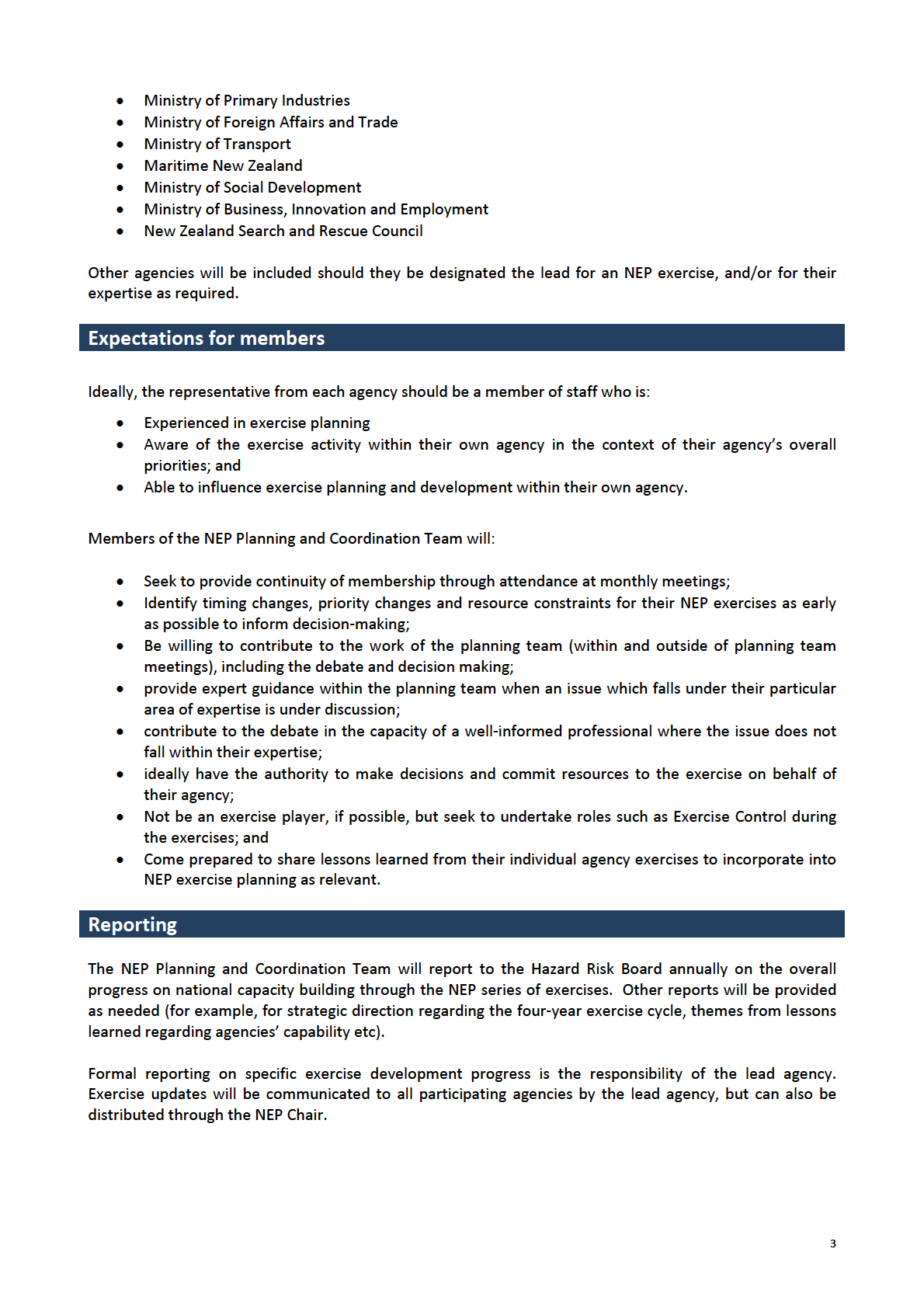 1982
ACT
INFORMATION
OFFICIAL
THE
UNDER
RELEASED
1982
ACT
INFORMATION
OFFICIAL
THE
UNDER
RELEASED
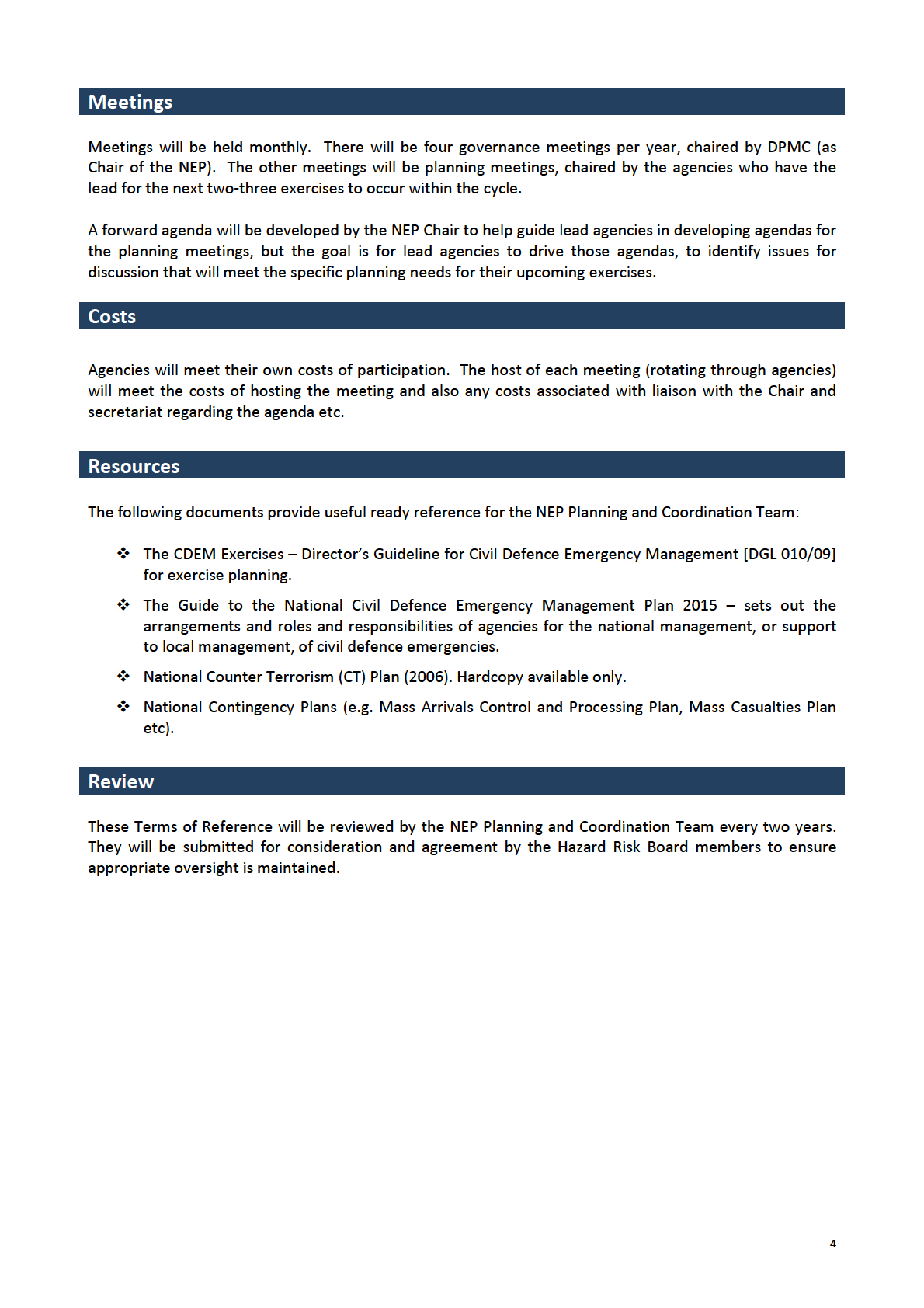 1982
ACT
INFORMATION
OFFICIAL
THE
UNDER
RELEASED
1982
ACT
INFORMATION
OFFICIAL
THE
UNDER
RELEASED
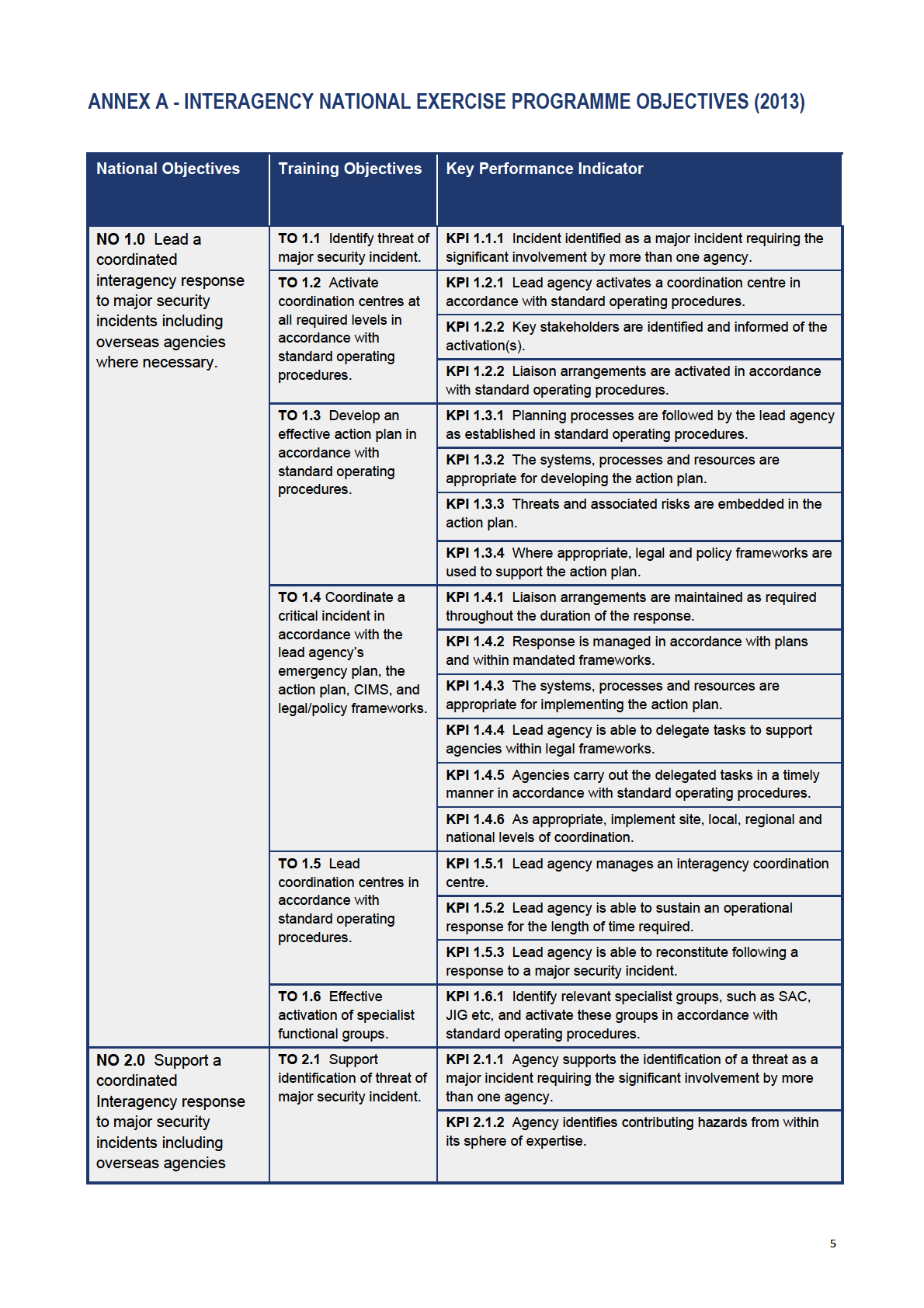 1982
ACT
INFORMATION
OFFICIAL
THE
UNDER
RELEASED
1982
ACT
INFORMATION
OFFICIAL
THE
UNDER
RELEASED
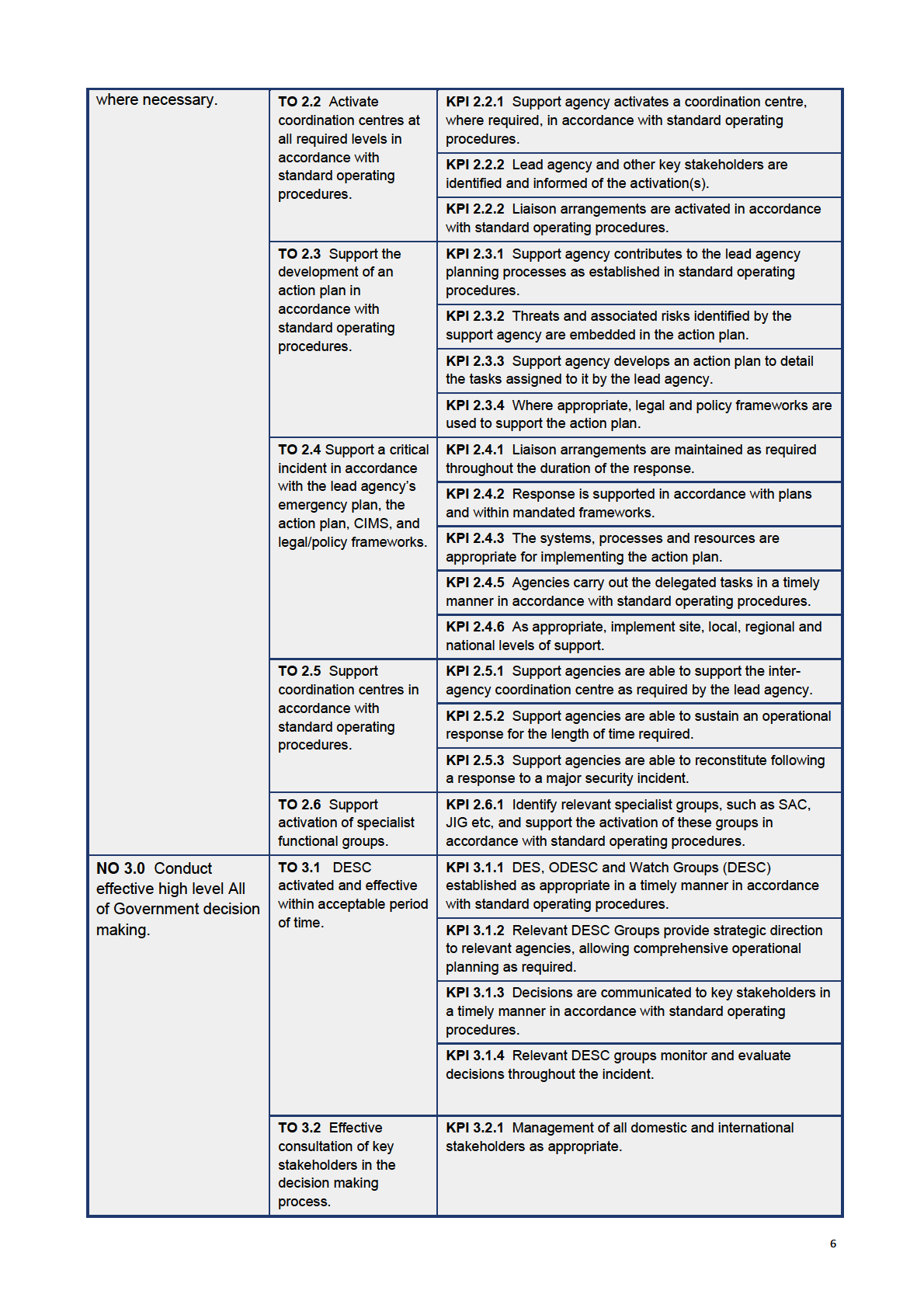 1982
ACT
INFORMATION
OFFICIAL
THE
UNDER
RELEASED
1982
ACT
INFORMATION
OFFICIAL
THE
UNDER
RELEASED
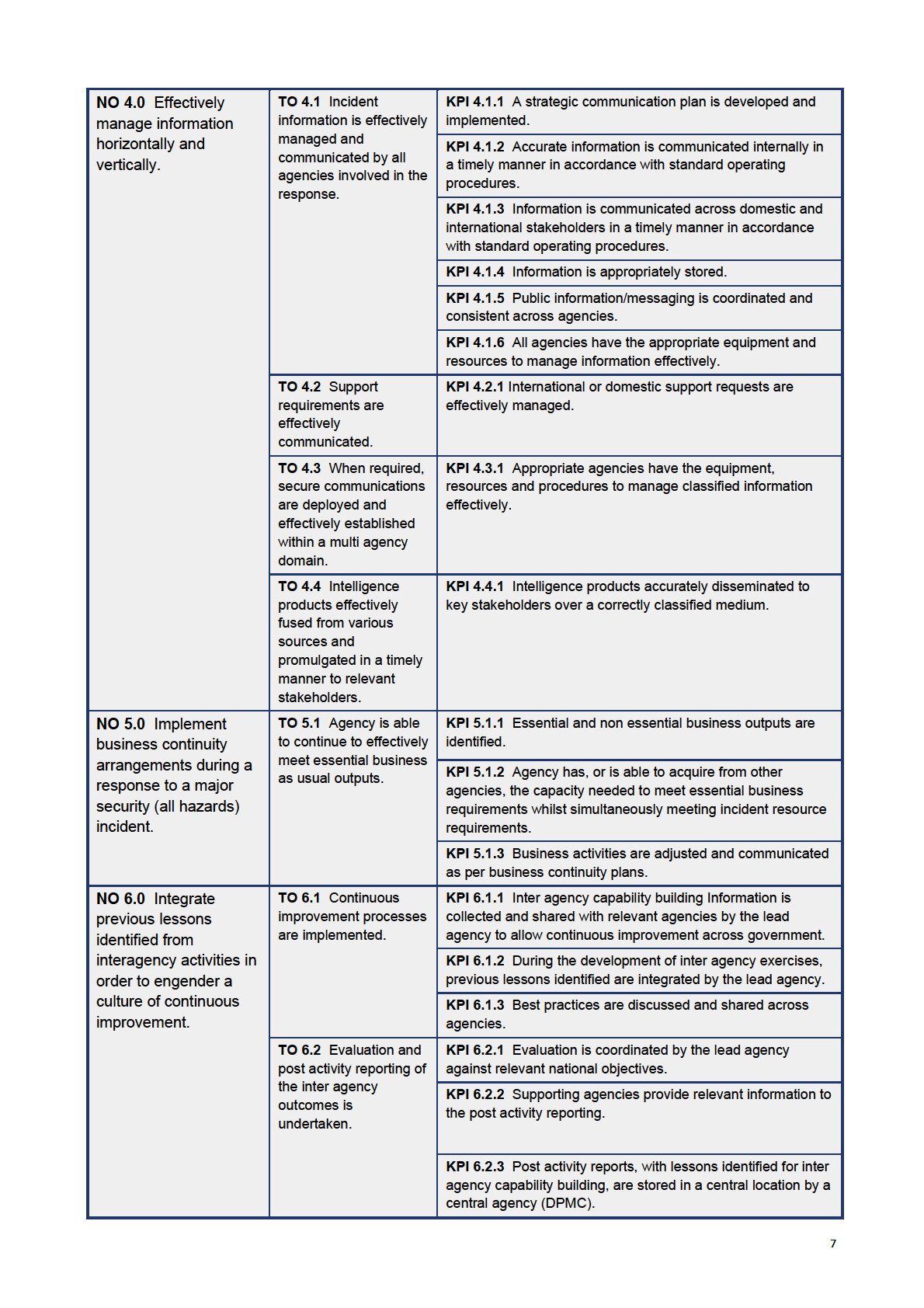 1982
ACT
INFORMATION
OFFICIAL
THE
UNDER
RELEASED
1982
ACT
INFORMATION
OFFICIAL
THE
UNDER
RELEASED
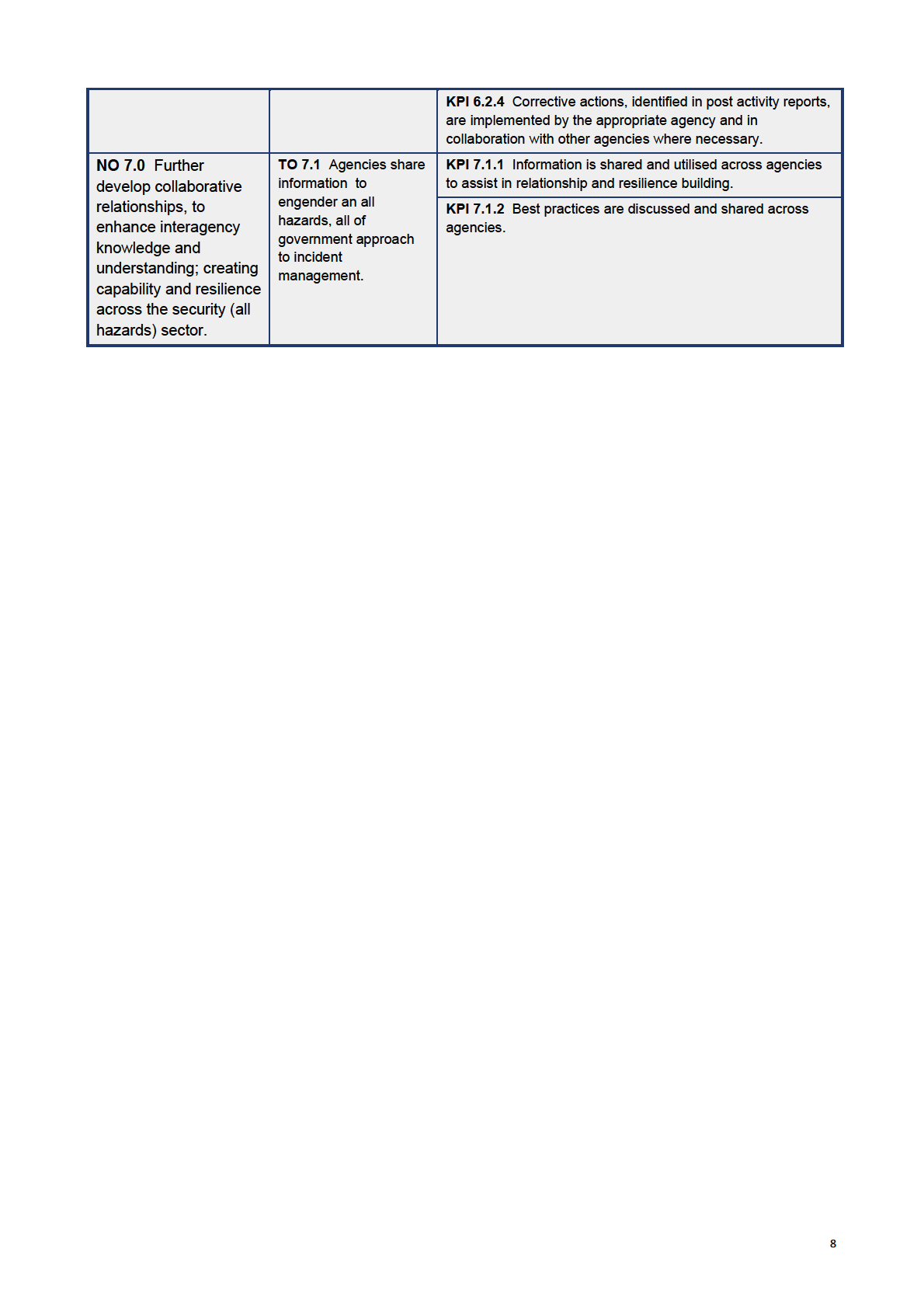 1982
ACT
INFORMATION
OFFICIAL
THE
UNDER
RELEASED
1982
ACT
INFORMATION
OFFICIAL
THE
UNDER
RELEASED
National Security System Training and
Development Group (NSSTDG) Terms of
Reference
Background
DPMC established the National Security System Training and Development Group (NSSTDG) in late 2015
to bring an ‘All of Government (AoG)’ approach to readiness activities associated with Training &
1982
Development. Having a competent and capable response workforce with the appropriate skil s, experience
and relationships contributes to a strong National Security System (NSS) and is fundamental to the resilience
of the overall system.
ACT
In 2017 the Hazard Risk Board (HRB) signed of on recommendations made by the NSSTDG to lift the
ef iciency and effectiveness of training across the sector. These recommendations included that:
• Staff working in a response have a level of competency appropriate to their role;
• Agencies engage in consistent CIMS training and assessment;
• Agencies will support the use of existing CIMS unit standards and engage with Skil s to support their
review and ongoing development of new unit standards as appropriate;
• Unit standards in Planning, Intelligence and Logistics are prioritised for development;
INFORMATION
• Work would continue to further develop and embed the NSSTDG Training and Development
framework
The NSSTDG meets on a monthly basis and is chaired by the Workforce Team within the National Emergency
Management Agency (NEMA).
OFFICIAL
Purpose and Role
Broadly, the NSSTDG exists to build the capability and capacity of the National emergency management
THE
workforce so that the New Zealand Government can respond efficiently and effectively in times of national
response.
Specifically, the NSSTDG will support and promote the work that the Workforce Team is undertaking to:
a) Deliver on the government’s recommendations from the
Ministerial Review, Better responses to natural
UNDER
disasters and other emergencies - focus area #4: Building the capability and capacity of the
Emergency Management Workforce.
b) Progress ‘The Enabling Consistent CIMS Practice’ project in accordance with Hazard Risk Board
recommendations and system need.
Note that the NSSTDG’s focus is on training and development that contributes to readiness for response.
This focus on response is aligned to the
Ministerial Review, Better responses to natural disasters and other
emergencies.
RELEASED
Responsibilities
The NSSTDG wil support and promote the work that the Workforce team and the National Emergency
Management Agency (NEMA) is undertaking to:
1. Enhance the capability and capacity of a trained workforce to support National Security System
responses
2. Professionalise the role of emergency management through professional standards and accreditation
3. Develop a recognised career path for emergency managers
1982
4. Increase the use of CIMS by central government agencies, departments and crown entities
5. Progress ‘The Enabling Consistent CIMS Practice’ project in accordance with Hazard Risk Board
recommendations and system need.
ACT
Group Composition
Membership is open to al interested central government agencies, departments and Crown entities. A list
of those agencies represented on the NSSTDG as at 1 April 2020 is contained in Appendix 2.
The skil s and capabilities of those who attend support the effectiveness of the group. A list of the skills and
capabilities required in at endees is contained in Appendix 3.
New agencies may be invited to join NSSTDG. This wil be documented appropriately and noted in any
INFORMATION
future refresh of this Terms of Reference.
Agency representation:
• Agencies are asked to send one representative to NSSTDG sessions but, if space allows, two
people from the same agency can attend.
• Sharing agency representation between two agency staff and alternating/sharing attendance at
OFFICIAL
NSSTDG sessions is acceptable.
• Sending an array of different representatives to each session is discouraged as it impacts on the
ability of the group to progress work and maintain consistency.
THE
Member’s role
In attending the NSSTDG, members support the Workforce team and the work relating to the Emergency
Management System Reform-related w
UNDER ork programmes by:
• Providing their agency perspective and representing the needs and expectations of their agency;
• Providing subject matter knowledge, expertise and free and frank advice;
• Championing improved capability development for response, disseminate relevant information and
provide their agency with a national perspective;
RELEASED
• Supporting each other in progressing the kaupapa of the NSSTDG
It is expected that NSSTDG members:
• Keep abreast of what the group is working on even if they are unable to attend a session
• Come to NSSTDG sessions prepared. If preparation in advance is required for any NSSTDG
session, this wil be emailed in advance.
• Attend NSSTDG regularly
Frequency of meetings
• The NSSTDG meets monthly or as/when required.
• To further projects or particular areas of work, smaller sub-working groups or focus groups can be
formed. Membership on these groups is voluntary and welcomed.
1982
Reporting
ACT
• The NSSTDG is a Hazard Risk Board Commit ee.
• Reporting and work programme updates wil be provided as/when required to boards or groups that
require updates, such as HRB, the Incident Management Reference Group (IMRG), the CIMS
Steering Group or the National Security System weekly update.
• The NSSTDG monthly update provides a monthly update to a distribution list of parties who have
interest in the work that is being done by the NSSTDG.
Circulation of meeting notes
INFORMATION
A summary of each working group, including updates and action points, wil be provided, post working
group, to all on the distribution list.
OFFICIAL
THE
UNDER
RELEASED
 1982
ACT
INFORMATION
OFFICIAL
THE
UNDER
RELEASED
1982
ACT
INFORMATION
OFFICIAL
THE
UNDER
RELEASED
Appendix 3:
Individual level skil s required to enable and enhance participation: The skil s and capabilities of those who attend support the effectiveness of the group. NSSTDG
members should possess the following skil s and capabilities:
• Learning and Development – learning design, development, delivery and evaluation
1982
and/or;
• People Capability Development / Workforce – broad knowledge and/or experience of
ACT
building people or workforce capability within and /or across organisations and/or;
• Emergency and/or Incident Management knowledge and practical application and/or;
• Knowledge of home agency systems / processes / capabilities that support response
and;
• Networking ability and influence – is connected and can influence effectively upwards,
downwards and across, in home agency and during working groups.
INFORMATION
OFFICIAL
THE
UNDER
RELEASED
 IN CONFIDENCE
Counter-Terrorism Coordination Committee (CTCC)
Terms of Reference
Purpose
1982
IN CONFIDENCE
Counter-Terrorism Coordination Committee (CTCC)
Terms of Reference
Purpose
1982
The Counter-Terrorism Coordination Commit ee (CTCC) coordinates and drives activity across the
counter-terrorism (CT) system, to implement the national
Counter-Terrorism Strategy (CT Strategy).
ACT
Context
The CTCC was established by DPMC in 2015, to bring together the significant pieces of CT work
being led by dif erent agencies across government, and to collectively deliver improvements to the
CT system at a national level. New Zealand’s first national CT Strategy was agreed by Cabinet in
September 2019, with the aim of “
bringing our nation together to protect all New Zealanders from
terrorism and violent extremism”.
Role of the CTCC
INFORMATION
The CTCC is responsible for ensuring the National Security System (NSS) delivers the vision,
outcomes and commitments set out in the CT Strategy. The key responsibilities of the CTCC are
therefore to implement the CT Strategy by:
a.
Supporting strategic CT decision-making and action, including by providing advice and
recommendations to the Security and Intelligence Board (SIB) on:
OFFICIAL
• The CT Strategy, to ensure it remains relevant and fit for purpose.
• CT risk management practice (across the 4Rs aspects of the CT Strategy), including
THE
governance gaps and opportunities for improvement.
• Specific CT-related priorities for action (such as significant CTWP adjustments).
b.
Coordinating and driving inter-agency CT work, including:
• Maintaining a comprehensive and cohesive CT Work Programme (CTWP), to deliver
UNDER
strategy objectives.
• Developing appropriate performance measures to monitor CTWP progress, and using
these indicators to report regularly to the Security and Intelligence Board (SIB).
• Managing and de-conflicting risks, issues and interdependencies relating to the delivery
of individual CTWP elements.
• Prioritising and coordinating the resourcing of priority CT system work streams where
RELEASED
required (acknowledging that agencies retain authority and responsibility for allocating
their own resources).
IN CONFIDENCE
Page
1 of
4
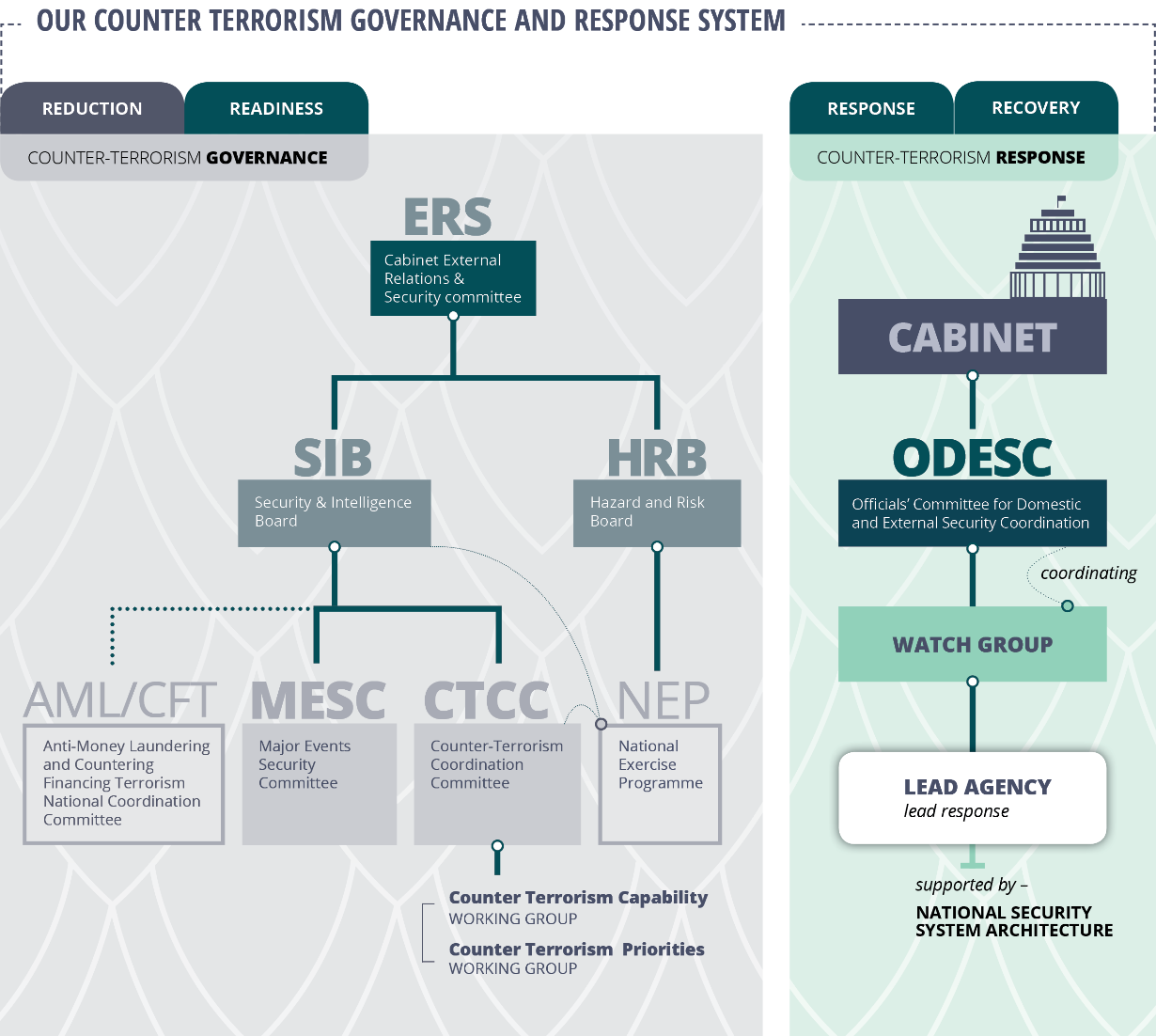 IN CONFIDENCE
IN CONFIDENCE
CTCC member agencies, in their roles as individual CTWP element owners, are responsible for
ensuring each element:
• Remains aligned to the CT Strategy.
• Is delivered in the most ef icient and effective way, using appropriate performance indicators.
• Takes into account connections to other CTWP elements, as well as the broader NSS as
appropriate.
• Are appropriately resourced.
1982
Governance and reporting to the Security and Intel igence Board ACT
The CTCC is a sub-committee of SIB. It provides advice and assurance to SIB about CT systems
risks, priorities, projects and resourcing requirements. CTCC reporting to SIB will take the form of a
regular report-back, and risks and issues wil be escalated on an as-required basis.
INFORMATION
OFFICIAL
THE
UNDER
RELEASED
IN CONFIDENCE
Page
2 of
4
IN CONFIDENCE
Sub-groups of the CTCC
Working groups reporting to and accountable to CTCC wil be established by as required. There are
two enduring CTCC working groups:
a. The
Counter-Terrorism Capability Working Group (CTCWG), an ad hoc sub-commit ee
responsible for enhancing New Zealand’s readiness to respond to a terrorist incident.
b. The
Counter-Terrorism Priorities Working Group, is responsible for recommending
updates to the CTWP to address New Zealand’s CT risks and vulnerabilities. This working
1982
group is also responsible for sector coordination of the National Security and Intelligence
Priority (NSIP) on CT, reporting in parallel on this aspect to the National Intelligence
Coordination Committee (NICC).
ACT
Membership
The CTCC is chaired by the Counter-Terrorism Strategic Coordinator. Membership of CTCC will
comprise representatives of NSS agencies operating in the CT system, with agency at endees to be
confirmed in consultation with the Chair and to be of an appropriately senior level.
CTCC meeting arrangements
The CTCC will meet at least quarterly – and significantly more often if required – with meetings
INFORMATION
aligned to the SIB meeting schedule where possible. Every second meeting wil include social sector
agencies, and the CTCC will allow for other external groups to present and discuss CT-related
issues. The National Security Group (NSG) within DPMC will provide secretariat services.
The Chair wil set the meeting agenda with a focus on strategic issues and risks, and
interdependencies across work streams. Work streams with a RAG status of Red wil be reviewed
OFFICIAL
at each meeting. Members can add items to the agenda by advising the Chair.
Al papers for consideration must be lodged with the Secretariat at least five working days prior to
THE
the meeting, and wil be circulated electronically to members at least three working days before the
meeting. The purpose of all papers should be identified in the agenda as being for
information,
discussion or
decision-making.
Prior to each meeting, members should ensure that they:
UNDER
• Read and understand the papers to be taken as read and any other papers submitted.
• Have formed a position on any decisions required by the CTCC.
• Prepare any feedback or questions.
CTCC members should be prepared to represent the views of their agency at meetings. Members
should also look to demonstrate the following values and behaviours:
RELEASED
• Debating difficult issues, and coming out with clear and agreed decisions focused on
delivering the CT Strategy.
• Working as a unified team.
IN CONFIDENCE
Page
3 of
4
IN CONFIDENCE
• Prioritising system interests above the interests of individual agencies, and not straying into
day-to-day operational issues.
Following each meeting, members should ensure that they:
• Complete any actions assigned to them.
• Communicate relevant CTCC decisions to their respective agencies and teams.
1982
ACT
INFORMATION
OFFICIAL
THE
UNDER
RELEASED
IN CONFIDENCE
Page
4 of
4
RESTRICTED
CYBER SECURITY STRATEGY CO-ORDINATION COMMITTEE
Terms of Reference - 2019
Purpose
This Terms of Reference defines the role of the Cyber Security Strategy Co-ordination Committee
(CSSCC) to implement New Zealand’s Cyber Security Strategy 2018 (the Strategy) through a more
joined-up approach.
1982
Mandate
Cabinet has agreed that relevant agencies implement the Strategy by establishing a CSSCC and Co-
ACT
ordinator [CAB-18-MIN-0562].
The focus of the CSSCC is to plan, monitor, and govern the annual work programme for joint-agency
and cross portfolio cyber security projects. The CSSCC will maintain strong links and coordinate with
relevant government institutions including the Government Chief Digital Officer and the
Government Chief Information Security Office. The CSSCC’s focus wil be on implementing the
government’s strategy for cyber security across New Zealand, rather than a focus on cyber security
in government alone.
While the CSSCC will be informed about agency-specific projects, it is not intended to make decisions
about agencies’ business-as-usual work or projects.
INFORMATION
As part of Cabinet’s direction to relevant agencies, the CSSCC will apply the Strategy’s new guiding
principles for how agencies wil work together during the planning, conduct, and assessment of
projects and initiatives to give effect to the Strategy. These principles are:
• Working with others in a way that:
OFFICIAL
o builds and maintains trust
o is people-centric, respectful, and inclusive
o balances risk with being agile and adaptive
THE
o uses our col ective strengths to deliver better results and outcomes, and
o is open and accountable.
The CSSCC will also need to ensure that agencies work more with other organisations, including
those outside ICT and cyber security, and participate in events to get broader input and engagement
with people, businesses, and community organisations. It is also anticipated that the CSSCC will
UNDER
provide oversight of any co-design projects undertaken to tackle shared policy, technology, and
service problems.
Government’s expectations for how cyber security agencies wil work together and implement the
Strategy are set out in detail in the ‘Delivering the Strategy: working together more effectively’
section and Appendix A of the Refresh of New Zealand’s Cyber Security Strategy Cabinet paper [CAB-
18-MIN-0562].
RELEASED
Approved by SIB, April 2019
RESTRICTED
Governance
The CSSCC will report to and seek guidance from the Security Intelligence Board where appropriate.
Membership
Membership of the CSSCC will reflect the agencies tasked with improving and regulating
New Zealand’s ‘as a whole’ cyber security and in particular those agencies involved in joint projects
1982
to address cross-sector issues.
The following agencies be standing members of the CSSCC:
ACT
• Department of the Prime Minister and Cabinet, National Security Group (Chair)
• Department of the Prime Minister and Cabinet, National Cyber Policy Office
• Department of Internal Affairs
• Government Communications Security Bureau
• Ministry of Business, Innovation and Employment
• Ministry of Defence
INFORMATION
• Ministry of Foreign Affairs and Trade
• Ministry of Justice
• New Zealand Defence Force
• New Zealand Police
OFFICIAL
• State Services Commission
Agency representatives should be senior officials with decision making authority, with regard to their
THE
agency’s cyber security functions.
Other agencies may attend the CSSCC where matters being considered directly affect their agencies.
It is also expected that a wider group of agencies and their component business units will be
involved in work that the CSSCC has oversight for.
UNDER
Meetings
The CSSCC will meet at its discretion. The National Cyber Policy Office (NCPO) of the DPMC will act
as the secretariat (a Cyber Security Co-ordinator, if funded, will lead secretariat support functions).
An agenda will be circulated ahead of the meeting to allow members to nominate items for
discussion. Ideally agenda items should be of a strategic, cross-cutting nature, related to decision-
making required to implement the Strategy. Relevant background papers for discussion should also
RELEASED
be circulated ahead of meetings. The NCPO will provide brief minutes and record follow-up action
steps for each meeting.
A working level group will also meet, as required, to ensure clarity of roles and responsibilities,
provide agencies an opportunity to raise current cyber-related priorities, implementation issues and
Approved by SIB, April 2019
RESTRICTED
updates, communication initiatives and provide relevant operational updates. This will be called the
Cyber Coordination Group (CCG). This group’s membership will be as broad as required to
coordinate across joint agency projects and will report to the CSSCC.
Other working level cyber security joint-agency groups and committees established or maintained to
implement Strategy objectives and will report to the CSSCC. The CSSCC will approve the
membership, mandate and terms of reference (if any) of any working groups. The mix of working
groups is expected to change over time in line with project initiation and completion, and the
business needs and capacity of agencies.
1982
Priorities
New Zealand’s Cyber Security Strategy 2018 will be the primary driver for the CSSCC’s priorities. The
ACT
Strategy sets out five priority areas for improving New Zealand’s Cyber security:
• Strong and capable cyber security workforce and ecosystem
• Cyber security aware citizens
• Internationally active
• Resilient and responsive New Zealand
• Proactively tackle cybercrime
These priorities are set out in more detail in
New Zealand’s Cyber Security Strategy 2018 and
DEV-18-SUB-0256.
INFORMATION
OFFICIAL
THE
UNDER
RELEASED
Approved by SIB, April 2019
RESTRICTED
FICC 2019-12-05 Item 3B
Foreign Interference Coordination Committee (FICC)
Terms of Reference
s6(a)
1982
ACT
INFORMATION
OFFICIAL
THE
UNDER
RELEASED
RESTRICTED
Page
1 of
3
RESTRICTED
FICC 2019-12-05 Item 3B
s6(a)
1982
ACT
INFORMATION
OFFICIAL
THE
UNDER
RELEASED
RESTRICTED
Page
2 of
3
RESTRICTED
FICC 2019-12-05 Item 3B
s6(a)
1982
ACT
INFORMATION
OFFICIAL
THE
UNDER
RELEASED
RESTRICTED
Page
3 of
3
RESTRICTED
MAJOR EVENTS SECURITY COMMITTEE
TERMS OF REFERENCE
Purpose
The purpose of this Terms of Reference is to describe the role, responsibilities,
1982
governance structure, and membership of the Major Events Security Committee (MESC).
Role
MESC is responsible for providing security advice to ODESC concerning major events
ACT
which have a national interest and ensuring that New Zealand security support for
approved major events is appropriate to the risk.
Responsibilities
• Providing strategic planning and policy advice to ODESC for major event security;
• Identifying major events that may require New Zealand government interagency
security support;
• considering threat level advice for those events identified for further consideration;
• considering the security measures being put in place by the host country of those
events identified for further consideration;
INFORMATION
• considering the risk assessment for those events identified for further consideration;
• producing a consular emergency response plan;
• determining the mitigation required to reduce residual risk levels for those events to a
level acceptable to the New Zealand Government;
• recommending to ODESC the mitigation measures required to reduce the residual risk
associated with a specific event to a level acceptable to the New Zealand
Government;
OFFICIAL
• identifying lessons learned from supported major events; and
• providing a post event report to ODESC
Governance Arrangements
THE
MESC is a sub-committee of the Security and Intelligence Board (SIB) and accordingly
the chief executives forum is responsible for approving and prioritising MESC’s work
programme. MESC wil report to SIB annually.
Membership
UNDER
MESC is chaired by an official from the National Security Systems Directorate (NSSD) of
DPMC. The Chair of MESC is responsible for coordinating the committee’s work
programme and reporting to SIB.
MESC wil be comprised of officials from government agencies that have a role to play in
a major event’s security support. The core agencies of the committee are DPMC, MFAT,
NZ Police, NZSIS, CTAG, GCSB, NZDF’ with other agencies co-opted as and when
required.
RELEASED
s6(a), s(6)(d)
.
RESTRICTED
1
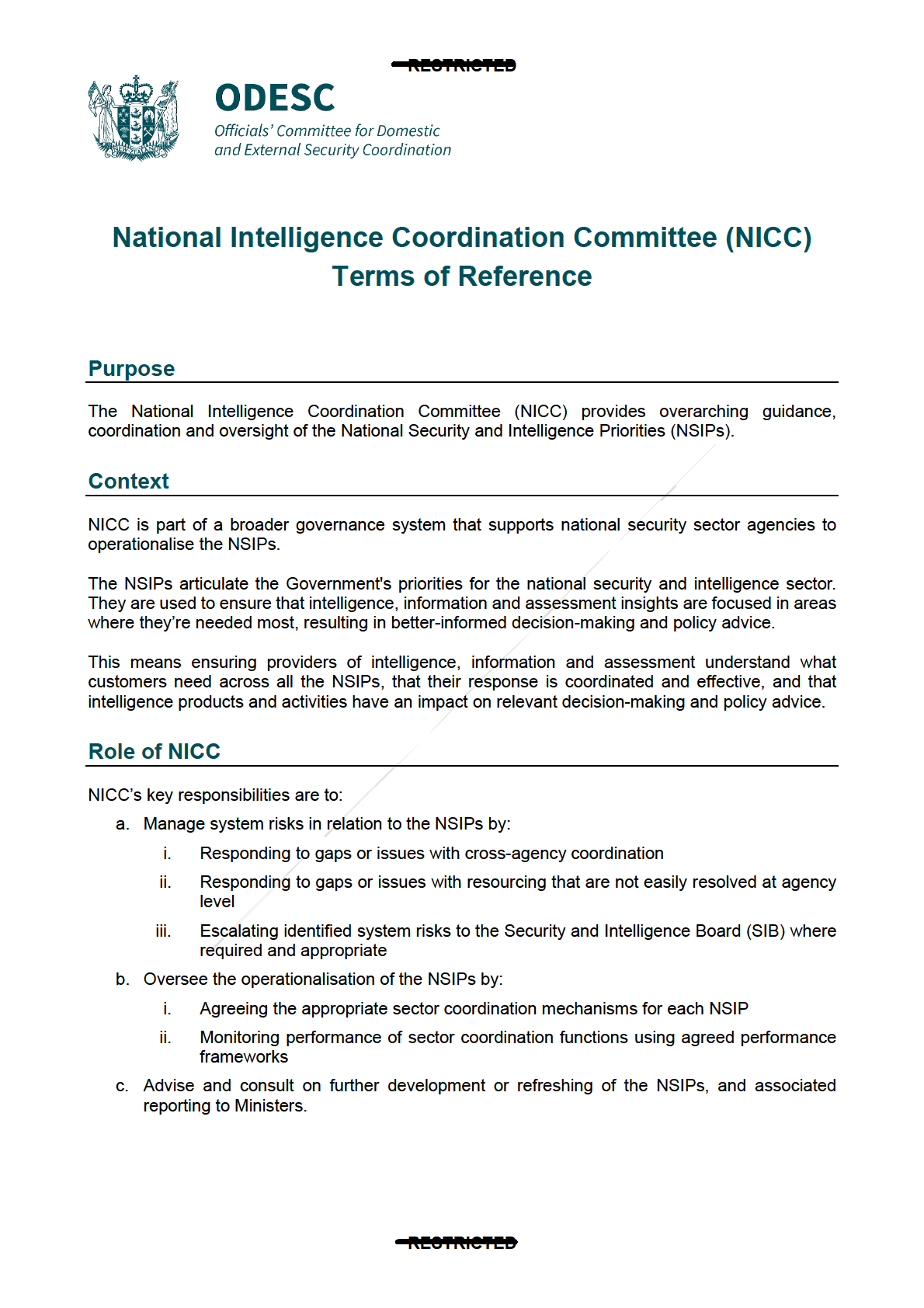 1982
ACT
INFORMATION
OFFICIAL
THE
UNDER
RELEASED
1982
ACT
INFORMATION
OFFICIAL
THE
UNDER
RELEASED
 1982
ACT
INFORMATION
OFFICIAL
THE
UNDER
RELEASED
1982
ACT
INFORMATION
OFFICIAL
THE
UNDER
RELEASED
RESTRICTED
Membership
NICC is chaired by DPMC’s Manager, Intelligence Coordination. Members include representatives
from the following agencies, at an appropriately senior level as decided by the Chair.
• NZ Customs (Intelligence)
• DPMC (Strategic Coordination, Policy, and Assessments)
• GCSB (Intelligence, Cyber and Policy)
1982
• MBIE (Intelligence and Policy)
• Ministry of Defence (Policy Branch)
• MFAT (ISED)
ACT
• NZDF (NZDI and GEOINT NZ)
• NZ Police (Intelligence and Policy)
• MPI (Intelligence and Policy)
• NZSIS including CTAG (Intelligence and Policy)
Behaviours and values NICC members operate as a collective. They represent the views of respective agencies at
meetings, but they focus on the system rather than attending solely as representatives of their
INFORMATION
agencies. NICC members are expected to make constructive use of the variety of experience and
perspectives in the room in debating the issues put before them and coming to a collective view.
OFFICIAL
THE
UNDER
RELEASED
RESTRICTED
Document Outline














